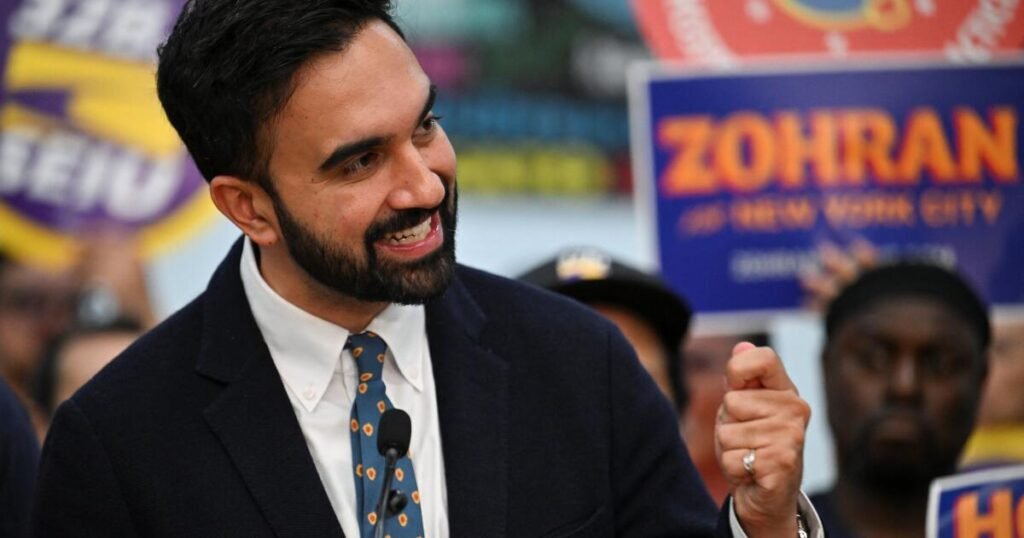New York City’s Mayoral Race Highlights Ranked Choice Voting
Recently, New York City’s mayoral contest garnered attention, particularly due to the rise of democratic socialists. Zohran Mamdani achieved a remarkable win against Andrew Cuomo, a seasoned Democratic political figure, largely because of a new ranked-choice voting system. It’s interesting that in 28 City Council races, no single candidate managed to secure more than 50% of the votes.
In many areas, especially in parts of California, such an outcome would typically lead to costly runoff elections between the top two candidates. However, New York City employs a ranked-choice voting system, allowing voters to rank all candidates by preference. If no candidate surpasses 50% in initial votes, the one with the least votes is eliminated. Then, the votes for that candidate are redistributed to the next choices indicated by those voters. This elimination and redistribution continue until one candidate finally achieves a majority.
Maybe it was a fortunate break for Mamdani to win the primary against Cuomo, but this system saves voters from enduring more campaigning and extra polling days.
Proponents claim that ranked-choice voting makes sure your preferences aren’t wasted if your top choice is eliminated. Supporters also highlight that such a system discourages negative campaigning, fosters better representation for women and minorities, encourages healthier competition, reduces election expenses, and eliminates so-called “spoiler effects” in voting.
Ranked choice voting is becoming more popular, particularly in various U.S. cities. Currently, 63 jurisdictions nationwide are using some form of it, including cities like Albany, Berkeley, and San Francisco.
Surveys indicate strong support for ranked-choice voting among Californians, with many cities witnessing increased diversity in their governing bodies post-implementation. These systems are reportedly saving taxpayers money by cutting down on costly runoff elections.
What could change if California employs ranked-choice voting for its statewide elections or in Los Angeles? The dynamics would undoubtedly differ from New York.
Unlike New York’s party primary elections, California typically conducts nonpartisan primary elections where all candidates appear on the same ballot. This means if a candidate loses in a primary, they can’t switch parties to run in the general election, a flexibility Cuomo now has.
The nonpartisan nature of California’s elections also means party affiliations play a different role compared to New York, which can make candidates choose strategically dominant parties before running. For instance, Rick Caruso did this in 2022. While ranked-choice voting doesn’t directly change this strategy, candidates may feel encouraged to appeal for second-choice votes as part of their campaign.
There are two additional key differences between California’s elections and the New York race—one at the local level and another at the state level.
Locally, in most jurisdictions, including Los Angeles, general elections are only held if no candidate wins over 50% of the main votes. Thus, ranked-choice voting could eliminate most primary elections in California, potentially saving money and boosting voter turnout, as many people tend to participate more in general elections compared to primaries.
On the state level, California generally uses a top-two primary system for state and federal elections. This means only the top two vote-getters advance to general elections, regardless of party affiliation, avoiding expensive run-offs. However, in strongly partisan areas, it often results in one-party dominance. Ranked-choice voting could offer underrepresented parties a better chance in these competitive races.
It’s still uncertain whether widespread ranked-choice voting would alter the political landscape in California. A strategic crossover vote, where voters from both major parties rank opposing candidates, could encourage more moderate outcomes. In areas dominated by one party, consistent second-choice support could bring moderate candidates to the forefront. On the other hand, in regions leaning left or right, it might enable moderates to adopt more extreme positions and gain traction.
The unique combination of ranked-choice voting with California’s nonpartisan approach could create strategic incentives and political shifts that would be unlikely in traditional party primary elections.
Campaigning styles might also transform. Candidates could avoid personal attacks or even team up with like-minded adversaries, similar to what Progressives did in New York to secure second-choice votes.
These uncertainties might lead state and local leaders to hesitate about rethinking the election process. After all, those currently in power might not want to change the system that got them there. Still, it’s essential to consider the potential advantages: cost reductions, greater participation, more representative outcomes, and less divisive politics.
If California truly wishes to reform its increasingly costly and polarized electoral system, examining ranked-choice voting should be a top priority.







